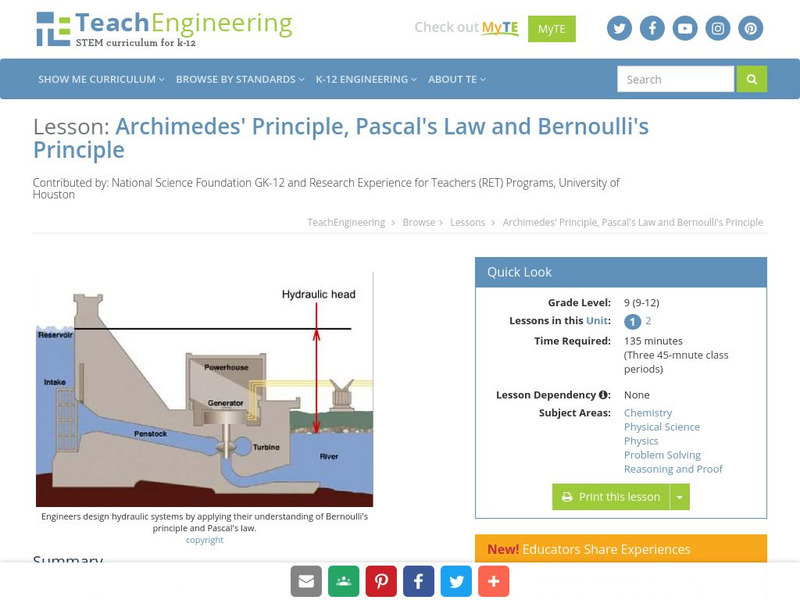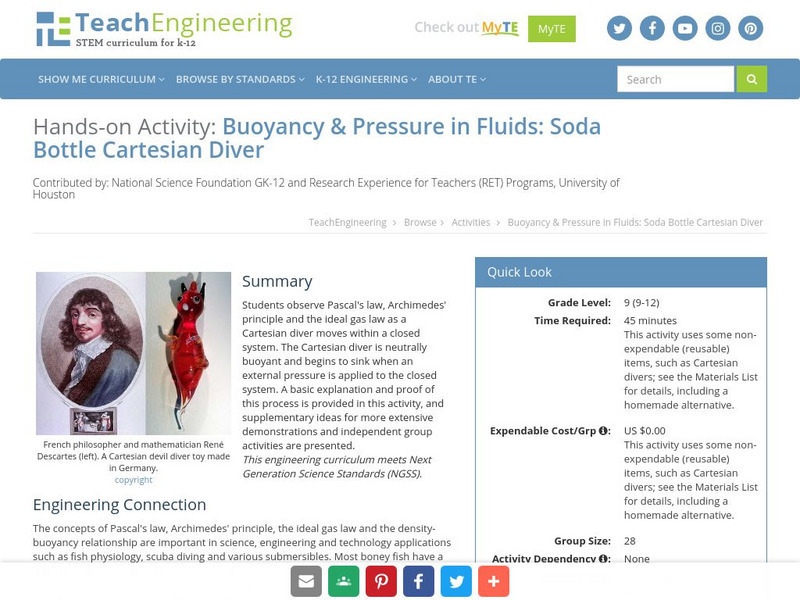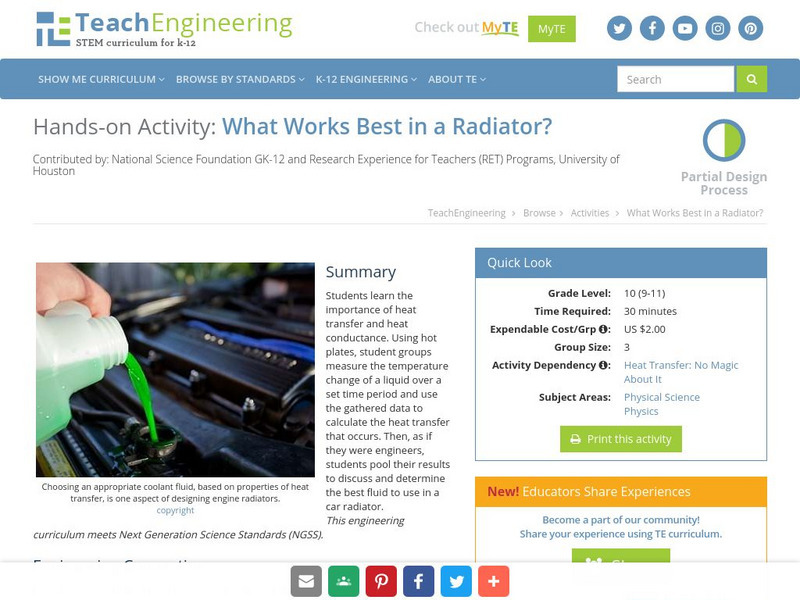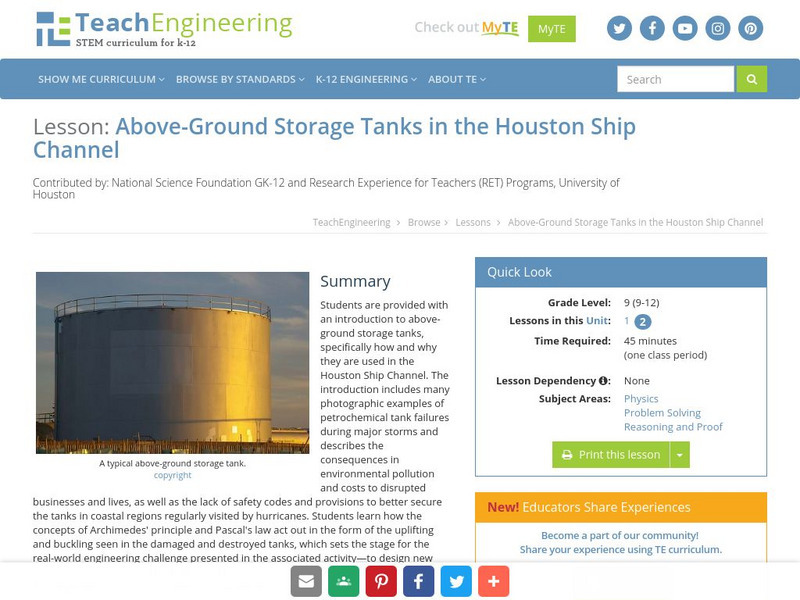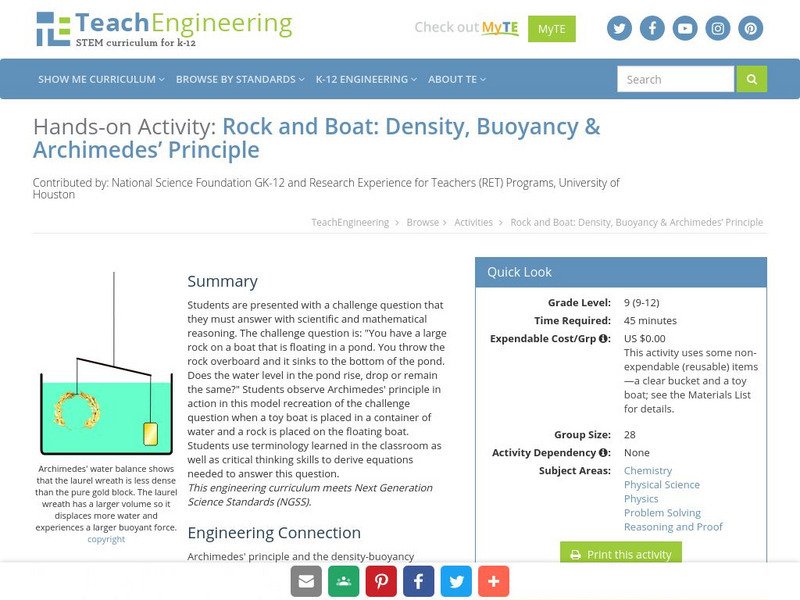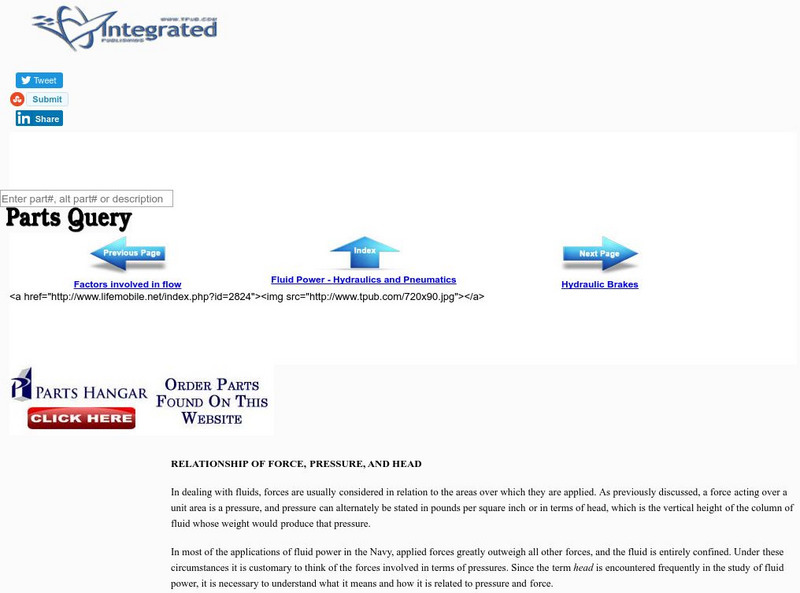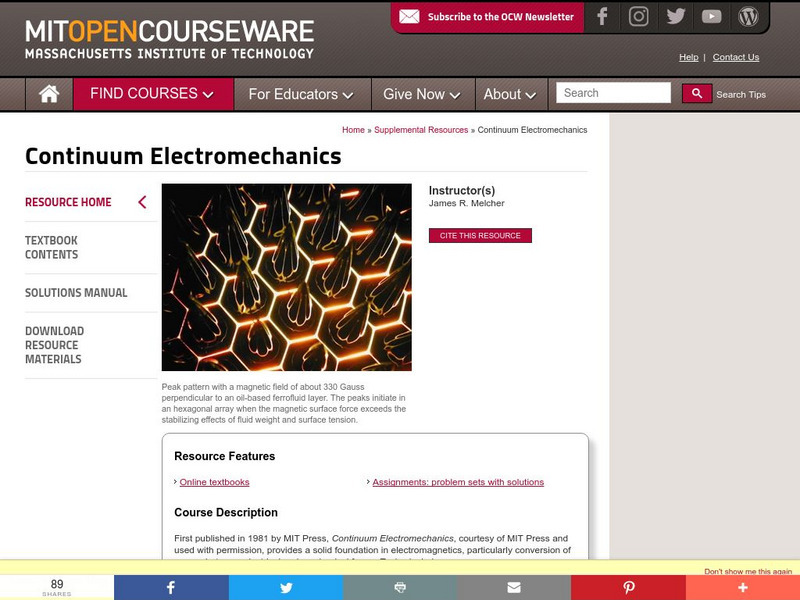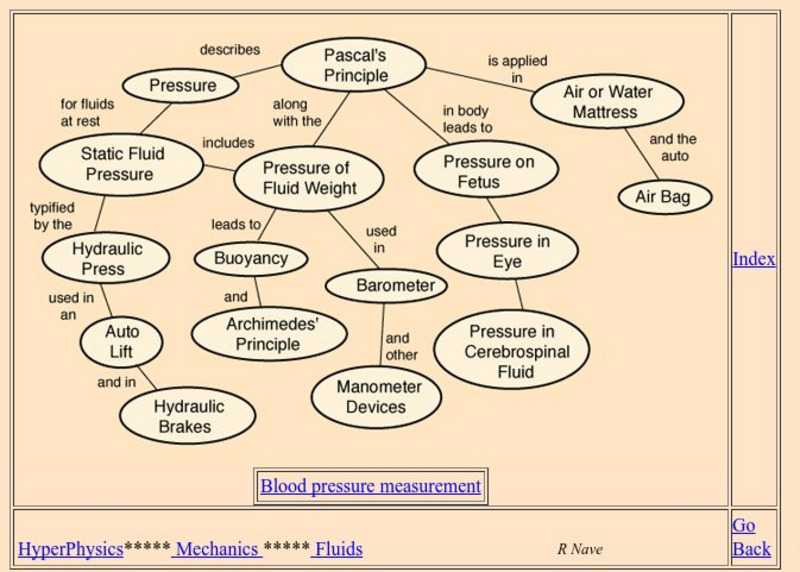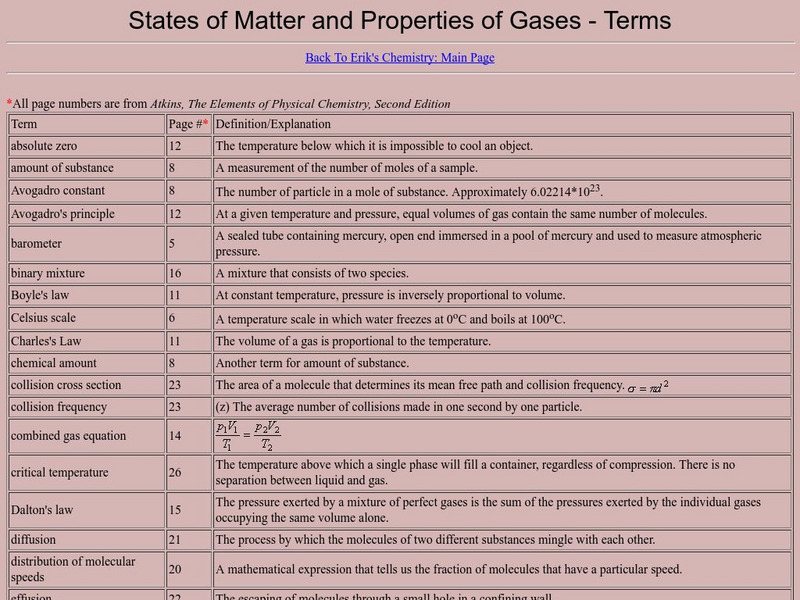TeachEngineering
Teach Engineering: Above Ground Storage Tank Design Project
In this culminating activity, student groups act as engineering design teams to come up with improved storage tank designs to make them less vulnerable to uplift, displacement and buckling in storm conditions.
TeachEngineering
Teach Engineering: Archimedes' Principle, Pascal's Law and Bernoulli's Principle
Students are introduced to Pascal's law, Archimedes' principle, and Bernoulli's principle through problems and engineering applications.
TeachEngineering
Teach Engineering: Gravity Fed Water System for Developing Communities
Students learn about water poverty and how water engineers can develop appropriate solutions to a problem that is plaguing nearly a sixth of the world's population. Students follow the engineering design process to design a gravity-fed...
TeachEngineering
Teach Engineering: Cartesian Diver
Students observe Pascal's law, Archimedes' principle, and the ideal gas law as a Cartesian diver moves within a closed system.
TeachEngineering
Teach Engineering: What Works Best in a Radiator?
Students learn the importance of heat transfer and heat conductance. Using hot plates, student groups measure the temperature change of a liquid over a set time period and use the gathered data to calculate the heat transfer that occurs....
TeachEngineering
Teach Engineering: Above Ground Storage Tanks in the Houston Ship Channel
Students are provided with an introduction to above-ground storage tanks, which sets the stage for the real-world engineering challenge presented in the associated activity- to design new and improved storage tanks that can survive storm...
TeachEngineering
Teach Engineering: Rock and Boat
Students observe Archimedes' principle in action in this challenge where a toy boat is placed in a container of water and a rock is placed on the floating boat. Students must explain why the water level rises/falls/stays the same based...
Integrated Publishing
Integrated Publishing: Pressure and Head
Detailed site dealing with pressure and force. The site is very complete with numerous examples and illustrations.
Science Struck
Science Struck: Piston Pump vs. Diaphragm Pump
Learn the difference between a piston pump and a diaphragm pump, both of which are positive displacement pumps. Includes chart listing characteristics for each, their different types, and their advantages and disadvantages.
NASA
Nasa: What Is Lift?
A description of how lift is a mechanical force that requires a fluid moving through a solid object and a change in velocity.
CK-12 Foundation
Ck 12: Biology: Barriers to Pathogens
[Free Registration/Login may be required to access all resource tools.] Explains the body's first line of defense against pathogens, such as the skin and body fluids.
Massachusetts Institute of Technology
Mit: Open Course Ware: Supplemental Resources: Continuum Electromechanics
College-level electrical engineering and computer science textbook highlighting the applications of continuum electromechanics.
Exploratorium
Exploratorium: Laminar Flow
Laminar flow is explained at a basic level here at Exploratorium.com. Examples of things that use laminar flow are given. Links to related sites.
Science Education Resource Center at Carleton College
Serc: Investigating Forces: Balloon Car Activity
In this activity, teams of students build a car out of common materials which is then propelled by the release of air out of a balloon and must travel a minimum distance. The activity is then extended to a competition to build the car...
New Advent
Catholic Encyclopedia: Blaise Pascal
Excellent discussion of the life and work of this great scientist and mathematician. Describes his range of interests and notes his many contributions. Please note that ?The Catholic Encyclopedia? is a historic reference source and...
Georgia State University
Georgia State University: Hyper Physics: Pascal's Principle
This site from Georgia State University Department of Physics and Astronomy shows a diagram of the relationship of Pascal's Principle to other topics. Links to other topics.
Exploratorium
Exploratorium: Adhesion
Adhesion is defined and an example is given. Adhesion is distinguished from cohesion. Examples of cohesion are stated as well. Links to pages with further information are provided.
TeachEngineering
Teach Engineering: Next Generation Surgical Tools in the Body
Through this unit, students act as engineers who are given the challenge to design laparoscopic surgical tools. After learning about human anatomy and physiology of the abdominopelvic cavity, especially as it applies to laparoscopic...
Exploratorium
Exploratorium: Exhibit Cross Reference: Cohesion
Cohesion is defined and an example is given. Cohesion is distinguished from adhesion. Examples of adhesion are stated as well. Links to pages with further information are provided.
Exploratorium
Exploratorium: Exhibit Cross Reference: Capillarity
Capillarity is defined and an example is given. A reference to the Facts on File dictionary is included. Links to further information are provided.
TeachEngineering
Teach Engineering: Fascinating Friction!
In this activity, students use wood, wax paper and oil to investigate the importance of lubrication between materials and to understand the concept of friction. Using wax paper and oil placed between pieces of wood, the function of...
Other
States of Matter and Properties of Gases: Terms
A very complete list of terms that are important to the study of gases. This resource is a web archive.
Other
See How It Flies: Airfoils and Airflow
One chapter from a larger site dedicated to explaining the physics of flight. Numerous diagrams show the flow of air around an airfoil.
Massachusetts Institute of Technology
Mit: Open Course Ware: Buoyancy
Students explore buoyancy. Some topics examined in the activities are buoyant force, stability of floating objects, and Archimedes' principle. The resource consists of video clips, lecture notes, practice problems, and exam questions....

